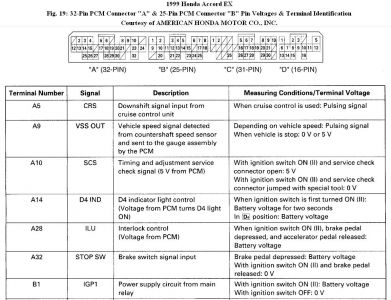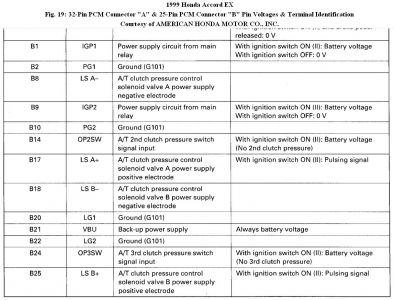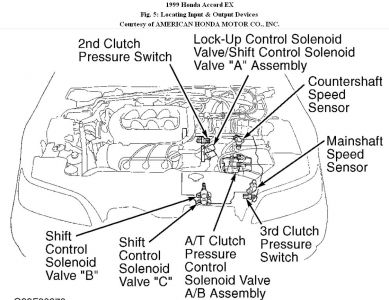Hi Teewhy80,
P0401 = EGR insufficient flow.
P1457 = EVAP control system leakage ( EVAP canister system )
Both above are emission control systems faults and would not be a safety concern except you would fail emission test.
P1739 is a fault with the transmission 3rd clutch pressure switch and is more of a concern becaus if the trans were to fail, it could affect safety and also might leave you stranded somewhere.
DTC P1739/26: 3RD CLUTCH PRESSURE SWITCH
1. Using scan tool, retrieve A/T freeze data. Clear fault codes and road test vehicle under same conditions freeze data was recorded. If fault code returns, go to next step. If fault code does not return, problem is intermittent, check transaxle and PCM connections.
2. Turn ignition on. Measure voltage between 25-pin PCM harness connector "B", terminal No. 24 Blue/White wire) and terminals No. 20 or 22 (Brown/Black wires). See Fig. 19 . If battery voltage is present, go to next step. If battery voltage is not present, go to step 4) .
3. Turn ignition off. Disconnect 25-pin PCM harness connector "B". Check for continuity between ground and 25-pin PCM harness connector "B", terminal No. 24 (Blue/White wire). If continuity is not present, check for loose connections, replace PCM with a known-good unit if necessary. Recheck system. If continuity is present, repair short to ground in Blue/White wire.
4. Raise and support front of vehicle. Set parking brake and block rear wheels. Start engine and shift to "2" position. Run in "2" position for more than 5 minutes. Measure voltage between 25-pin PCM harness connector "B", terminal No. 24 (Blue/White wire) and terminals No. 20 or 22 (Brown/Black wires). If voltage is about zero volts, check connections and replace PCM with a known-good unit as necessary. Recheck system. If voltage is not about zero volts, go to next step.
5. Turn ignition off. Disconnect 3rd clutch pressure switch connector. See Fig. 5 . Turn ignition on. Measure voltage between ground and 3rd clutch pressure switch connector. If battery voltage is present, go to next step. If battery voltage is not present, repair open or short in Blue/White wire between 25-pin PCM harness connector "B" and 3rd clutch pressure switch connector.
6. Measure resistance between ground and 3rd clutch pressure switch connector. If resistance is 10 megohms or more, check for loose PCM or 3rd clutch pressure switch harness connectors. Check connections and replace PCM with a known-good unit if necessary. If resistance is less than 10 megohms, replace 3rd clutch pressure switch.



SPONSORED LINKS
Sunday, September 26th, 2010 AT 8:34 AM








